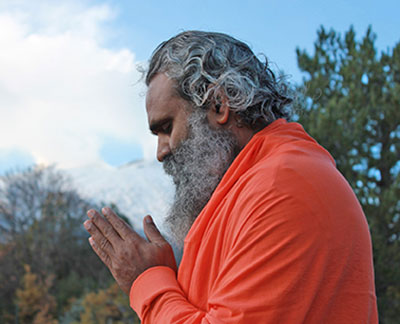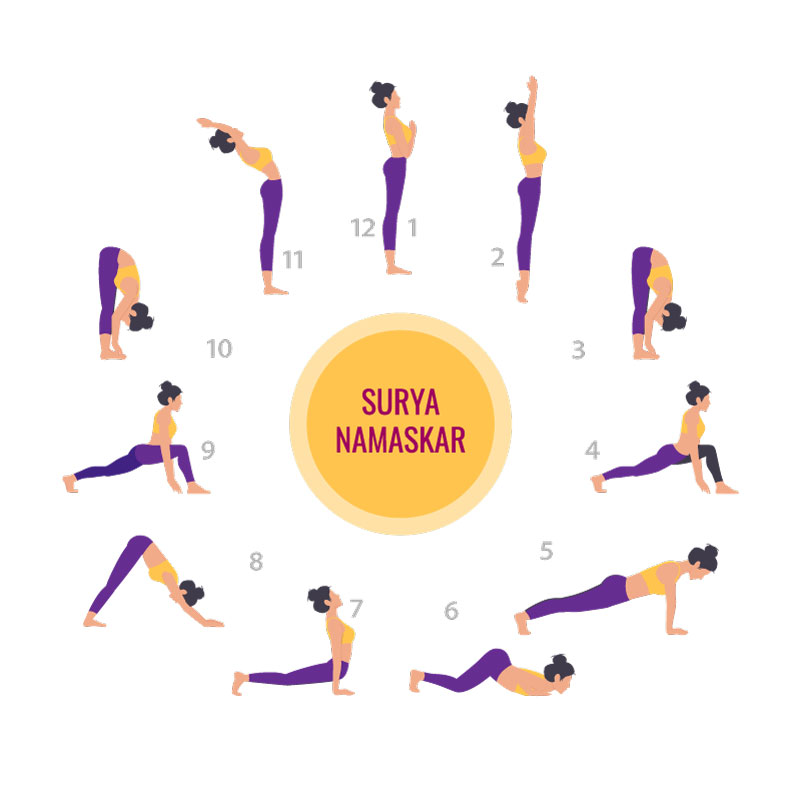Many Westerners associate Yoga with certain physical exercises, the so-called Asanas, and may have images in their minds of people sitting in the lotus position or getting into other unusual poses.
However, this is just one of the applications of Yoga. Taken generally, we can translate the word Yoga as ‘connecting with oneself through unity and silence’. This connection is to be achieved not only through physical movements, but through all our thoughts and actions in everyday life.
The original, complete Yoga is known as ‘Ashtanga Yoga’, from which numerous branches have been derived, and to this day new applications – some more meaningful than others – are emerging. Ashtanga means ‘eight parts’ and points to the eightfold path of Yoga.
This path includes various basic approaches, e.g. social and ethical behavior, meditation, breathing exercises (Pranayama) and also strengthening the body through Asanas. The purpose of all these disciplines (Tapas) is to achieve the greatest possible unity with our environment and all that exists.
The number 8 recurs in ancient Ayurveda texts such as Charaka Samhita, which distinguishes eight branches: internal medicine; medicine of the ears, eyes, nose, and throat; medicine for healthy offspring; children’s medicine; rejuvenation; mental and spiritual health; toxicology; surgery.
To clarify the relationship between Ayurveda and Yoga, we can say that both are systematic paths, with Ayurveda leading to perfect health, and Yoga to pure consciousness and enlightenment. Together, they help us to utilize our full potential and to understand and live our life as the miracle it is.
The Sun Salutation’s meaning
The name Surya Namaskar is composed of two Sanskrit words: ‘Sun’ and ‘Salutation’. You’ll probably recognize the word ‘Namaskar’ from the greeting ‘Namaste’.
In doing Surya Namaskar, we express our gratitude for everything the Sun gives us day by day. Traditionally, it is practiced facing the Sun. The repeated cycle of movements symbolizes the course of the Sun within one day.
The movements are carried out in a dynamic and rather brisk fashion, making Surya Namaskar a perfect early-morning exercise for waking the body and firing up Agni (metabolism and digestion).
Each cycle consists of 12 Asanas, connected by flowing transitions. Unlike some current practices, Maharishi Ayurveda instructs us to move calmly and smoothly and to hold the postures for 5 seconds or more, so that stillness can set in and deepen during the exercise.
You can repeat Surya Namaskar as many times as suits you. It is recommended to do at least 5 rounds for a good warm up and a gentle deepening of the breath.
Some Yogis in India and around the world do 108 cycles of Surya Namaskar at special occasions, like the beginning of the new year. The number 108 has special significance in Vedic Science and you’ll find it practically everywhere, e.g. in Jyotish (Vedic astrology), in Marma Therapy as the number of energy points, in the number of separate texts belonging to the Upanishads, etc.

What Surya Namaskar does
As mentioned, doing Surya Namaskar warms up the entire body, stretches our front and backside, arms and legs, and deepens the breathing. Joints become more flexible and the digestive fire is stimulated.
Clearly, Surya Namaskar is an exercise that activates our ‘solar energy’ – present in our body’s own power center, the solar plexus. This is the driving energy we need to come into our creative strength and make our day dynamic.
The coordination and integration of breathing and movement play a very important role in Yoga. Consciously bringing the breath in alignment with the Asanas deepens their effect; at the same time, it’s a good exercise for concentration. After you have gained some experience with it, you can add another element: consciously directing your gaze to a specific point.
Overview of benefits:
- Stretching and strengthening of the entire musculature
- Warming up the body and activating the circulation
- Loosening of back and shoulder tensions
- Activation the body’s energy resources
- Strengthening the cardiovascular system
- Expanding the lungs and increasing the breathing volume
- Activation of the digestive fire and elimination of Ama
- Strengthening of concentration and focus
- Harmonization of body and mind
After a round of Sun Salutations, a pleasant sense of vitality sets in. Your physiology feels strengthened and through your heartbeat and breathing you’re more aware of being alive.
The best tips for doing Surya Namaskar
Maharishi Ayurveda’s central point is balance – reaching the goal most efficiently, not overly exerting oneself. So yoga exercise, including Surya Namaskar, is not about stretching as deeply as possible into an Asana and exceeding your limits, but only going as far as is comfortable for your individual body. With this basic attitude, you protect yourself from injuries and strains. Over time, through regular practice, strength and flexibility will increase quite naturally and automatically.
- It is best to practice on an empty stomach, for example in the morning before breakfast. If you can only find time for it in the evening, leave a two hours’ gap after a meal.
- Wear comfortable clothes. You can practice barefoot or with non-slip socks on a yoga mat.
- Never force yourself into a position by pulling or bouncing. Especially in the morning, joints and fascias are still quite stiff and should not be overstrained. Frequently, you can see better mobility in the warmer months than during winter. Warmth is an important factor with regard to the fascias’ flexibility.
- If necessary, use aids such as blocks or thick books under your hands to support postures such as the forward bend. Have them ready at the front of the mat when you start.
- Practice regularly and make it a routine, for example every day or every other day, then you will quickly see progress and become much more flexible.
- Find your own pace and breathing rhythm. Practice slowly and calmly, staying in each posture for five seconds or more. As possible, try to synchronize your inhaling and exhaling with the movements. After a short time, the correct breathing rhythm will come naturally. If you start to pant, you have overexerted yourself: slow down the pace so that the breath can flow deeply and evenly.
- Those who are already practiced can add elements of concentration and strengthening, through a focused gaze (‘Drishti’) and the incorporation of Mulabandha, which is the active contraction of the pelvic floor muscles (‘Kegels’).

The Surya Namaskar sequence in detail
- Tadasana – Mountain Pose: Bring your hands together in front of your chest and exhale in a relaxed manner.
- Urdhva Hastasana – Mountain pose with arms extended: Inhale, bring the hands above the head and bend back slightly.
- Uttanasana – whole forward bend: Exhale, bend the upper body forward and place the hands on the floor or on the supports.
- Exhale and extend the right leg backward into the lunge posture.
- Inhale and now extend the left leg as well, so that you enter the plank posture.
- Ashtangasana: As you exhale, lower the knees, chest and forehead to the floor.
- Bhujangasana – Cobra: While inhaling, raise the head and torso slightly by pressing down with the arms, the neck should not be overextended.
- Adho Mukha Svanasana – Downward-Looking Dog: With the exhalation, raise the pelvis into the posture called downward-looking dog. The arms are fully extended and the back is long. It can be very pleasant to spend a few breaths here and feel the intense stretch.
- Inhaling, move the right leg forward, back into the lunge.
- Uttanasana – whole forward bend: Exhale and place the left foot next to the right. The upper body remains low so that you arrive back in the whole forward bend.
- Urdhva Hastasana – Mountain Pose with arms extended: With the inhalation, raise the upper body and bend back slightly, as in the beginning.
- Tadasana – Mountain Pose: Place the hands in front of the heart in the standing mountain pose and exhale deeply.

The Maharishi Ayurveda Team wishes you much joy and success in your practice!

Download the article as a PDF file.
© Maharishi Ayurveda Privatklinik Bad Ems

